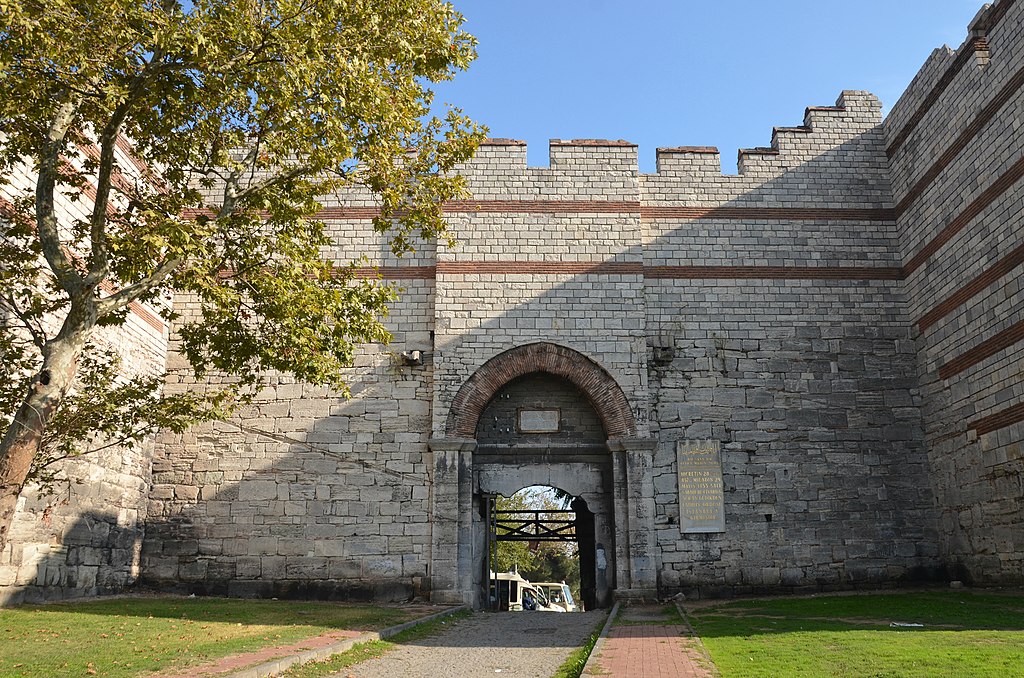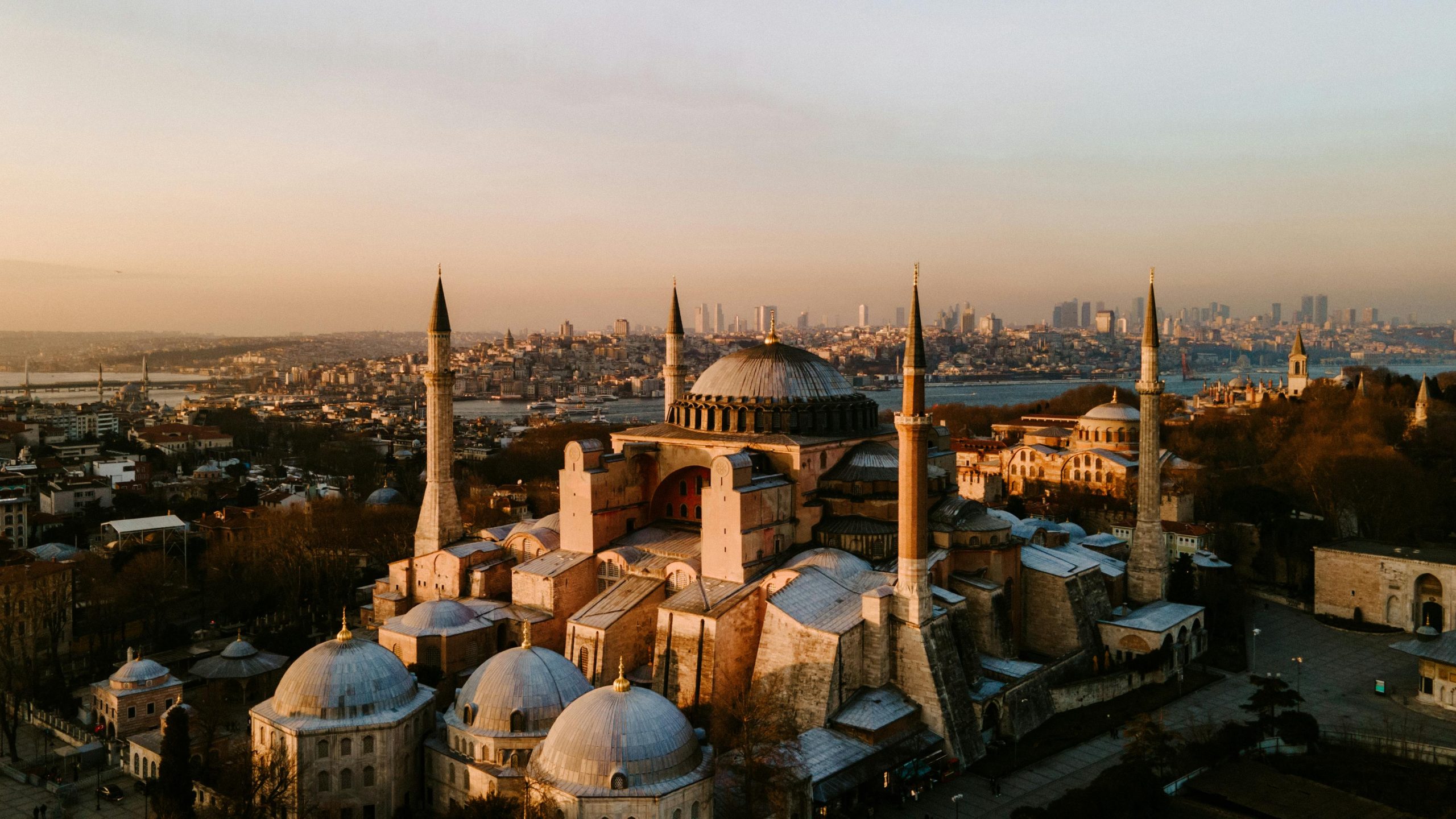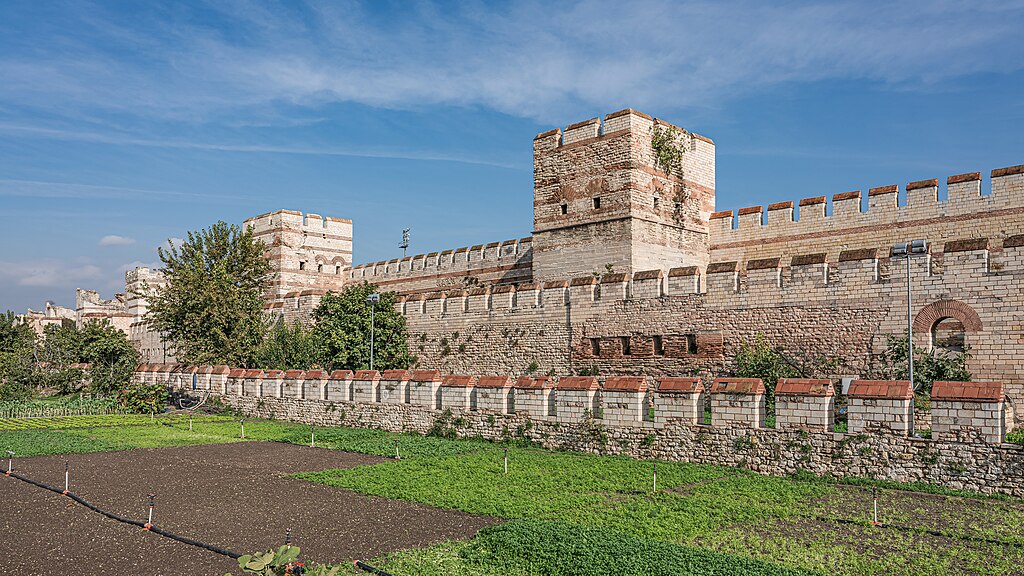Gate of Charisius, Istanbul
City Gate in Istanbul

The Gate of Charisius — known in Turkish as Edirnekapı, or “Gate of Adrianople” — crowns the highest of Istanbul's seven hills and stands as one of the most historically charged points along the city's ancient Theodosian Walls. This was the gate through which Sultan Mehmed II, known to history as Mehmed the Conqueror, triumphantly entered Constantinople after its fall on May 29, 1453. For this reason, Edirnekapı is one of the must-see places in Istanbul for anyone fascinated by the city's imperial past — a site that symbolizes both the end of Byzantium and the dawn of Ottoman greatness.
Second only to the Golden Gate in importance, the Gate of Charisius was the northernmost of the major entrances to the old city. Its elevated position offered sweeping views over the surrounding landscape, making it a key stronghold during sieges. It was also the area of fierce resistance during the final days of the Byzantine Empire. After the conquest, this gate became forever tied to the image of Mehmed II entering his new capital to pray at the Hagia Sophia, marking one of the most transformative moments in world history. The site remains a great place to visit on a walking tour of Istanbul's Theodosian Walls, connecting visitors directly to that moment of destiny.
History and Significance of the Gate of Charisius (Edirnekapı)
The Gate of Charisius was built in the 5th century as part of the Theodosian Walls, the monumental defensive system that protected Constantinople for over a thousand years. It took its Byzantine name from a nearby monastery or palace belonging to a certain Charisius, though it later became widely known as the Adrianople Gate (Edirnekapı) because it led to the main road heading northwest to Edirne (ancient Adrianople), the former Ottoman capital.
During the Siege of 1453, the area around the gate became one of the main defensive zones. Emperor Constantine XI Palaiologos is believed to have fought and died not far from here, commanding his forces during the final Ottoman assault. Once the Byzantine resistance collapsed, Sultan Mehmed II entered the city through this gate, a deliberate and symbolic act demonstrating both conquest and continuity.
Ten years later, Mehmed visited the ancient ruins of Troy, where he declared that by taking Constantinople, he had avenged the Trojans against the Greeks — a symbolic linking of classical myth and Ottoman destiny. This gesture reflected Mehmed's deep historical awareness and his ambition to position his empire as heir to both ancient and Byzantine civilizations. From that point onward, the Gate of Charisius (Edirnekapı) stood as the literal and spiritual entry to a new era in Istanbul's history.
Things to See and Do at the Gate of Charisius (Edirnekapı)
Visitors to the Gate of Charisius will find themselves standing at the highest point of the Theodosian Walls — roughly 76 meters above sea level — offering one of the best panoramic views in the city. The gate's structure, though altered and restored over the centuries, retains much of its historic presence, with massive masonry and remnants of Byzantine design integrated into later Ottoman repairs.
Nearby, the Mihrimah Sultan Mosque, built in the 16th century by the great Ottoman architect Mimar Sinan, overlooks the gate and adds to the area's visual majesty. The views from the surrounding walls stretch across the Golden Horn, blending Istanbul's layered past and modern skyline. For those exploring the entire Theodosian Wall route, this northern section is one of the most atmospheric and best-preserved stretches.
How to Get There
The Gate of Charisius (Edirnekapı) is located in the Fatih district of Istanbul, along the upper end of the Theodosian Walls near the Edirnekapı neighborhood. The nearest Marmaray station is Kazlıçeşme, from which the gate is approximately a 30-minute walk or a short taxi ride. You can use the official TCDD Taşımacılık website to check schedules, compare routes, and purchase tickets for Turkey's national and regional trains operated by TCDD. For a more streamlined experience (especially if you prefer an English interface or want to compare across countries), we recommend using Omio, which allows you to easily compare prices, schedules, and book train tickets across Turkey and the rest of Europe — all in one place. Visitors arriving by car will find parking available around the Mihrimah Sultan Mosque and nearby residential streets. If you are looking to rent a car in Turkey I recommend having a look at Discover Cars, first, as they compare prices and review multiple car rental agencies for you. Buses also run frequently from Eminönü and Beyazıt to the Edirnekapı stop, right beside the gate.
Practical Tips on Visiting the Gate of Charisius (Edirnekapı)
- Best time to visit the Gate of Charisius: Late afternoon for stunning sunset views over the Golden Horn.
- Entrance fee in Euros: Free.
- Opening hours: Accessible at all times.
- Official website: Not applicable.
- How long to spend: 30–45 minutes.
- Accessibility: Uneven terrain; moderate climb to reach the walls.
- Facilities: Small shops and rest areas nearby.
- Photography tip: Capture the gate and Mihrimah Sultan Mosque together for a perfect historical contrast.
- Guided tours: Featured in several Byzantine-Ottoman history tours of the city walls.
- Nearby food options: Traditional eateries and tea gardens in Edirnekapı and nearby Eyüp.
Is the Gate of Charisius (Edirnekapı) worth visiting?
Definitely. The Gate of Charisius is one of the top sights in Istanbul for anyone interested in the city's dramatic transformation from Byzantium to Ottoman Istanbul. It was through this gate that Mehmed the Conqueror entered his new capital — an event that reshaped not just the city, but the course of world history. Standing here today, with the city stretched before you, it's impossible not to feel the weight of that momentous transition.
FAQs for Visiting the Gate of Charisius (Edirnekapı)
Why is it called the Gate of Charisius?
It was named after a nearby palace or monastery belonging to a Byzantine noble named Charisius.
Why is it also called Edirnekapı?
Because it marked the start of the old road to Edirne (Adrianople), hence its Ottoman name “Edirnekapı.”
What happened here in 1453?
This was the gate through which Sultan Mehmed II entered Constantinople following the Ottoman victory.
Is the original gate still intact?
Parts of the original masonry survive, though much has been restored or rebuilt over the centuries.
What can you see nearby?
The Mihrimah Sultan Mosque, sections of the Theodosian Walls, and panoramic views of Istanbul.
Nearby Attractions to the Gate of Charisius (Edirnekapı)
- Mihrimah Sultan Mosque – A stunning 16th-century mosque by architect Mimar Sinan overlooking the gate.
- Theodosian Walls – The city's ancient fortifications, stretching from the Sea of Marmara to the Golden Horn.
- Chora (Kariye) Mosque – Former Byzantine church famous for its exquisite mosaics and frescoes.
- Panorama 1453 History Museum – A 3D immersive museum recreating the final Ottoman conquest.
- Eyüp Sultan Mosque – One of Istanbul's holiest sites, located just north along the Golden Horn.
The Gate of Charisius appears in our Complete Guide to Visiting Istanbul!
This website uses affiliate links which may earn a commission at no additional cost to you!
Visiting Gate of Charisius
Nearby Attractions
- Chora Church (0.0) km
Church in Istanbul - Palace of the Porphyrogenitus (0.3) km
Palace in Istanbul - Palace of Blachernae (0.3) km
Palace and Roman Site in Istanbul - Kaligaria Gate (0.6) km
City Gate in Istanbul - Fifth Military Gate (1.3) km
City Gate in Istanbul - Gate of Saint Romanus (1.4) km
City Gate in Istanbul - Panorama 1453 History Museum (2.1) km
Museum in Istanbul - Gate of Rhesios (2.4) km
City Gate in Istanbul - Suleymaniye Mosque (2.7) km
Mosque in Istanbul - Rüstem Pasha Mosque (2.9) km
Mosque in Istanbul


